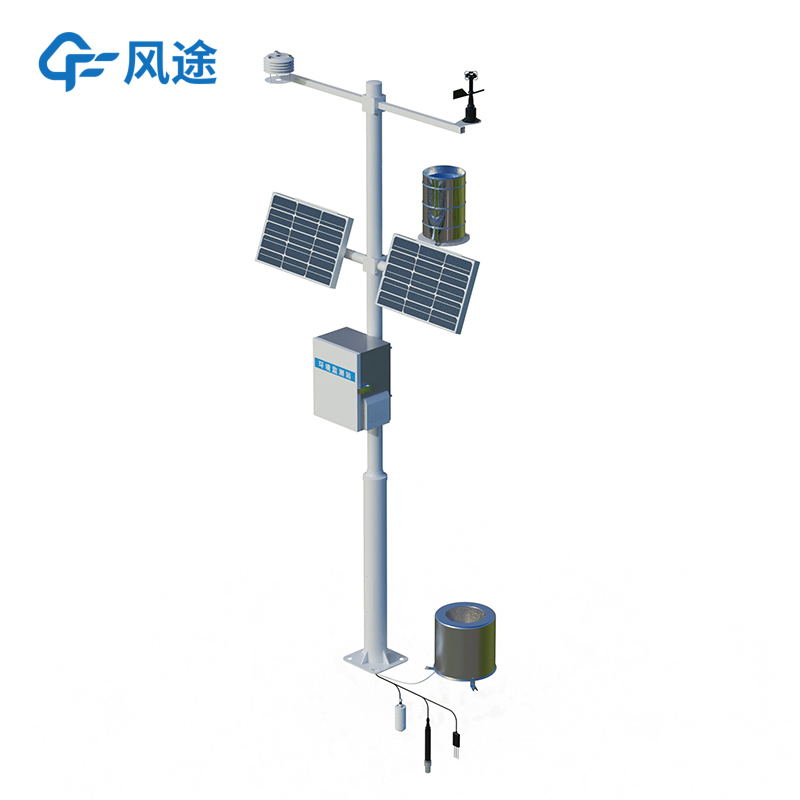Climate change has the greatest impact on agriculture. Extreme weather events such as high temperatures, droughts, floods, and frosts directly damage crop growth, leading to reduced yields or quality degradation. For example, European vineyards lost over 2 billion euros due to frost damage in 2020; frost in Brazilian coffee-producing regions in 2021 caused a 30% increase in global coffee prices; extreme drought in southern Europe led to a 50% decline in olive oil production and a 20%-30% reduction in wheat, corn, and other crops.
Therefore, we need to use technical means for real-time observation, data collection, analysis, and prediction of meteorological conditions affecting agricultural production to support agricultural decision-making and management. Against the backdrop of global climate change leading to frequent extreme weather events, this technology has become an important tool for modern agriculture to cope with meteorological risks.
Agricultural meteorological monitoring relies on multi-source data collection and processing technologies, including IoT weather stations, meteorological satellites, radar monitoring, and artificial intelligence prediction models. These technologies can achieve continuous monitoring of field-scale meteorological conditions (such as temperature, precipitation, humidity, light, etc.) and provide short-term to medium-to-long-term weather forecasts. By analyzing historical and real-time data, the system can help agricultural operators predict extreme weather events and optimize agricultural arrangements such as irrigation, fertilization, and pest control, thereby reducing losses, improving resource utilization efficiency, and supporting climate change adaptation strategies.
Key Weather Data for Agriculture:
Precipitation: Including the amount, intensity, and duration of rainfall and snowfall. Directly related to soil moisture, determining whether irrigation or drainage is needed to avoid drought and flood disasters.
Temperature: Including air and soil temperatures, especially the maximum daytime temperature and minimum nighttime temperature. Affects crop growth rate, flowering period, fruit quality; both frost and high temperatures can cause severe damage.
Humidity: Refers to the moisture content of the air. Excessively high humidity easily triggers pests and diseases, while excessively low humidity accelerates soil moisture evaporation and affects crop transpiration.
Sunlight: Refers to the duration and intensity of solar radiation. It is the basis for plants to produce energy through photosynthesis and directly affects crop growth and yield.
Wind Speed and Direction: Real-time monitoring of wind direction and speed can promptly issue warnings to farmers about severe weather such as strong winds and storms, enabling protective measures to prevent crop lodging or flower/fruit drop.
Subsequently, all collected information is integrated into a unified weather platform, which can be accessed anytime via mobile phones or computers. Farmers can also set which most important data to display and analyze trends through clear charts, making decisions on various agricultural arrangements more evidence-based.
Automatic Farmland Weather Station:The FT-NQ10 Automatic Farmland Weather Station launched by Fengtu Technology provides farmers with a comprehensive meteorological solution through integrated multi-parameter monitoring and intelligent analysis.
The weather station can real-time monitor meteorological elements such as air temperature, humidity, wind speed, wind direction, light intensity, rainfall, and atmospheric pressure. It supports expanded monitoring of soil parameters including soil temperature, humidity, salinity, pH value, and nitrogen-phosphorus-potassium content. Its advantage is breaking through the limitations of traditional single-parameter monitoring, achieving data integration, and obtaining comprehensive environmental information with one deployment.
The device supports high-frequency data upload to the cloud platform every 10 minutes. Users can remotely view real-time and historical data via mobile phones or computers and customize over-limit alarm functions.

Article address:https://www.sqqx.net/en/news/752.html

 +86 15898932201
+86 15898932201



